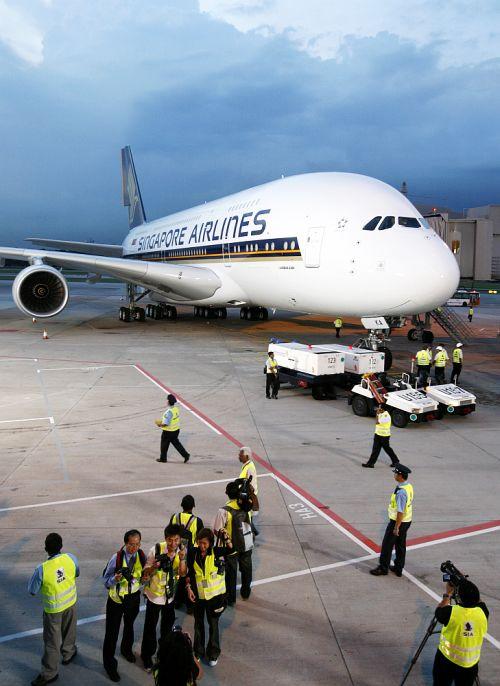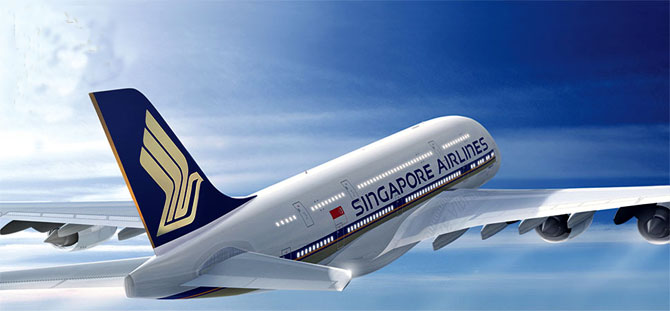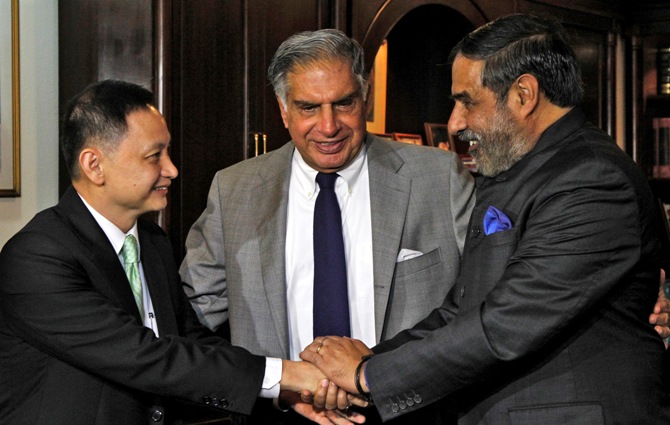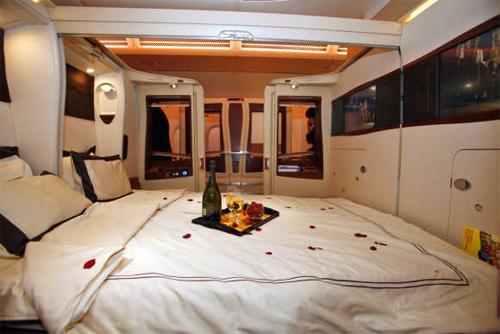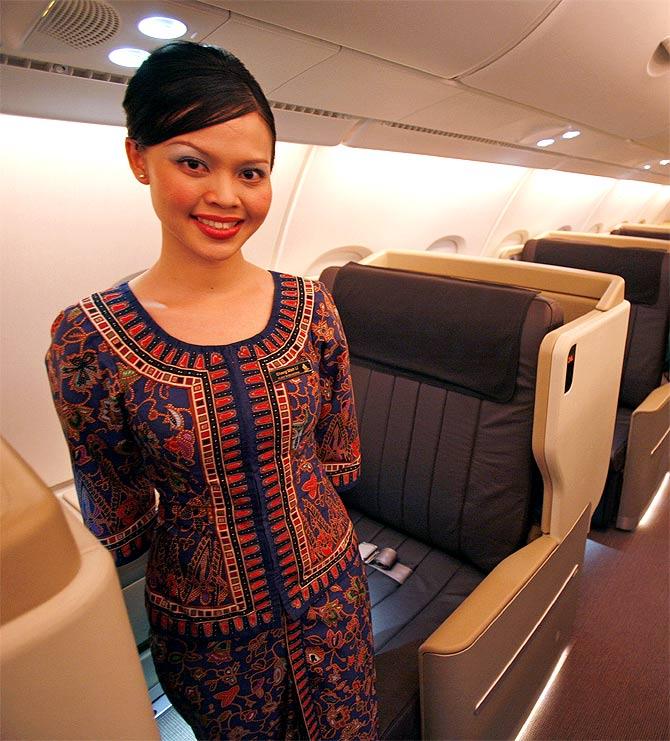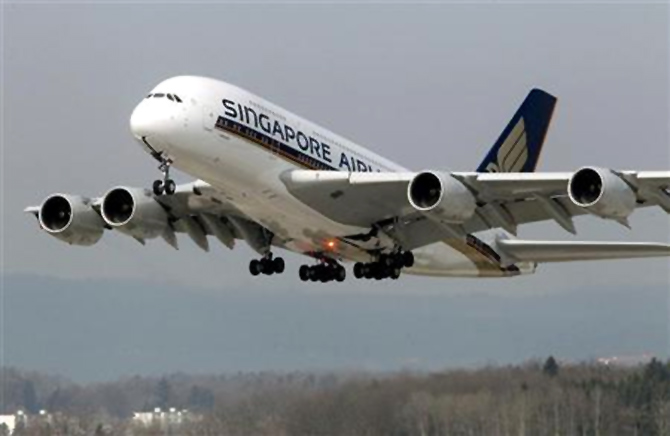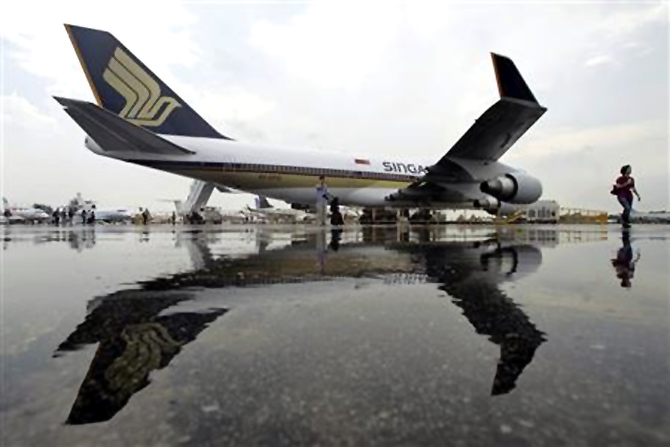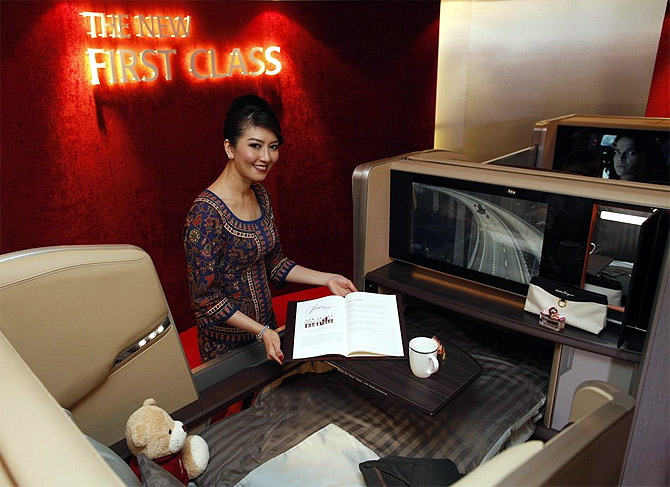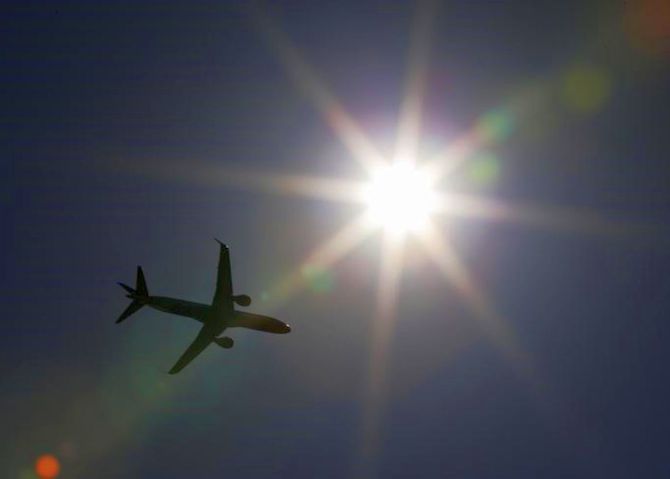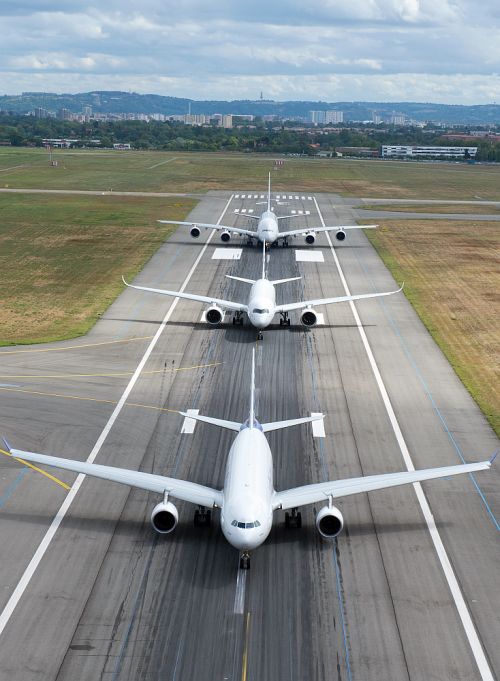 | « Back to article | Print this article |
Vistara offers a ray of hope to full-service carriers
Most experts in the aviation business have written off full-service carriers.
Over the last several years, low-cost carriers have steadily increased their market share to 70 per cent.
The full-service carriers have done everything they can to hold on to their business -- which includes dropping their fares to the level of the low-cost carriers and booking losses -- but that hasn’t stemmed the tide.
But two developments last week suggest that the full-service model may still have life left in it.
First, Vistara, the airline floated by Tata Sons and Singapore International Airlines, announced that its service, to be launched in October, will be a premium one.
It will offer personalised service in its business as well as economy class -- something not yet seen in India.
Please click NEXT to read further. . .
Vistara offers a ray of hope to full-service carriers
Phee Teik Yeoh, the CEO of the airline, said the ‘basification’ of travel in India has led to passengers losing their individuality, and Vistara will change the rules of the game.
A few hours after this announcement, Jet Airways Chairman Naresh Goyal said that Jet Konnect, the low-cost service, would be discontinued and henceforth the company would operate only its full-service carrier.
The Jet Konnect aircraft will be reconfigured to have a mix of business and economy seats.
Passengers will get free meals, more free baggage and all the other facilities offered by a full-service carrier.
Please click NEXT to read further. . .
Vistara offers a ray of hope to full-service carriers
Goyal admitted that the dual-brand strategy had confused passengers and promised to return the airline to its old glory -- it was known for its on-time performance (a reputation now enjoyed by IndiGo) and top-class service.
The course correction, the company says, will give it better flexibility in operations and improve yields, which will help it pare its losses (Rs 218 crore or Rs 2.18 billion for the quarter ended June 30).
In almost all markets, full-service and low-cost represent two different segments and serve different sets of fliers.
In these markets, the difference between full-service and low-cost fares is at least 50 per cent.
Please click NEXT to read further. . .
Vistara offers a ray of hope to full-service carriers
In some markets like Malaysia, it can be 100 to 200 per cent.
In India, the fares are more or less the same, even though the costs of full-service carriers are 25 to 50 per cent higher.
That is why full-service carriers have been making huge financial losses.
For instance, Jet Airways, whose costs are typical of a full-service carrier, has a cost available seat kilometer of Rs 5.67, which is over 50 per cent higher than low-cost carriers.
However, it sells its tickets at an average price of Rs 5,700, which is only marginally higher than that of low-cost carriers.
Please click NEXT to read further. . .
Vistara offers a ray of hope to full-service carriers
Most low-cost carriers have a CASK that is 20 per cent to 25 per cent lower but their average gross fare is between Rs 5,000 and Rs 5,500.
Some commentators have said that sanity will return to the market after these two developments, and the sector may be able to pare its losses.
(According to the Centre for Asia-Pacific Aviation, Indian carriers made losses of $1.7 billion in 2013-14 and could end the current financial year $1.3-1.4 billion in the red.) Some sceptics insist the full-service model is truly dead in India and proffer the example of Kingfisher Airlines which offered world-class service but could not charge a premium. Unable to control costs, its finances took a turn for the worse.
Please click NEXT to read further. . .
Vistara offers a ray of hope to full-service carriers
It reacted by lowering the standard of its service.
And from there it was a downward spiral for the airline.
Many others feel the Indian market has evolved and there is a segment that doesn’t go by the price tag alone.
Amber Dubey, partner and India head of aerospace and defence at KPMG, is one of them.
“There is space for full-service carriers in India. There are corporate travellers who are willing to pay a reasonable premium for better services, airport lounges, frequent flyer benefits and so on .”
Please click NEXT to read further. . .
Vistara offers a ray of hope to full-service carriers
Checks and balances
Higher fares may help, but unless carriers can keep costs on a tight leash, the full-service strategy will not work.
Kapil Kaul, who heads Centre for Asia Pacific Aviation in India, says: “Jet Airways has to bring down its cost structure closer to a low-cost carrier’s and yet offer premium services.
“The key is to have premium services in the front end and a very efficient and low-cost backend.
“Otherwise, the financial stress will continue.”
That is a big challenge as the legacy costs of incumbent full-service carriers -- Jet Airways and Air India -- are between 25 per cent and 50 per cent higher than their low-cost rivals.
Please click NEXT to read further. . .
Vistara offers a ray of hope to full-service carriers
To reduce costs would clearly mean a major overhaul of the way they do their business. This could mean job cuts, faster turnaround of aircraft, putting them in air for longer hours, and leasing planes smartly.
Keeping the costs low could be less of a challenge for Vistara as it does not have any legacy cost.
For instance, it is the first domestic airline to have only one hub -- in New Delhi.
So all flights will depart and come back at night to the capital.
This will help it reduce costs.
Also, it is looking to outsource a substantial portion of its operations.
Please click NEXT to read further. . .
Vistara offers a ray of hope to full-service carriers
It is in talks with Air India to outsource technical checks of its aircraft.
It is also looking at flying its aircraft 12 to 13 hours a day, which is more than a full-service carrier like Air India (11 to 12 hours) and in line with low-cost carriers.
It can also keep the airport-to-employee ratio in check as it is starting from scratch.
It is expected to be significantly lower than Air India’s ratio of 1: 232 (this includes the employees of its two subsidiaries for engineering services and ground handling) and Jet Airways’ ratio of 1:138.
Yet, both Jet Airways and Vistara need to create a well-differentiated product in their economy and the business classes -- beyond serving free meals -- for customers to shift from low-cost carriers.
Please click NEXT to read further. . .
Vistara offers a ray of hope to full-service carriers
At the moment, full-service as well as low-cost carriers operate from the same airports, offer similar frequency on key routes and have a similar national footprint.
Moreover, some low-cost carriers have started to upgrade their services in order to attract corporate travellers.
Thus, IndiGo offers corporate travellers meals at a little extra cost and provides lounge services for a fee.
GoAir offers six business class seats that offer free lounge, meals, a car to the plane, extra luggage of 35 kg and wider seats.
For this, passengers have to fork out from 40 per cent to even double the amount of regular fare.
Please click NEXT to read further. . .
Vistara offers a ray of hope to full-service carriers
In effect, it has created a new market in the space between a low-cost carrier and business class.
SpiceJet has also introduced Spicejet Max to offer priority check-ins and luggage delivery, free meals and seat selection for an extra Rs 500.
These moves indicate that both Jet Airways and Vistara have enough headroom to tap business-class passengers who are willing to pay for extra services.
Currently, business-class seats constitute only 8 to 10 per cent of the total domestic capacity, but they make up 15 to 20 per cent of the revenues.
Please click NEXT to read further. . .
Vistara offers a ray of hope to full-service carriers
The two airlines could cash in on this segment of corporate travellers who today might be flying low-cost carriers like IndiGo but could shift if they are offered more personalised service.
Vistara’s Yeoh is clearly not troubled by the competition in the India skies.
That is because he says that airlines have only scratched the surface of a huge growth market for every kind of service.
He says, India has only about 430 aircraft for 1.2 billion people; in China, for a similar population there are over four times more planes in the air.
“There is a vast untapped market waiting to explode” says Yeoh.
